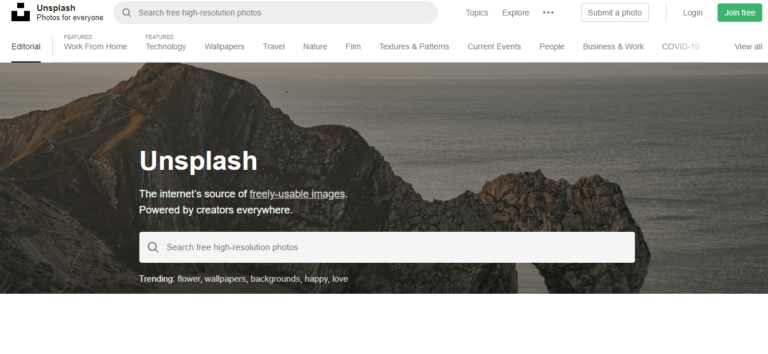Wouldn’t it be nice to show up at just the right time when your ideal customer is searching for the products or services you offer?
Content that is top-ranked on search engines like Google helps you to increase your website traffic, differentiate yourself from your competitors, inspire, attract, and convert your audience.
While this sounds great, it’s not always straightforward or easy.
Google takes over 200 ranking factors into consideration when deciding what content to show first. Your competitors want your target groups’ attention and are willing to pay for it.
It takes time to stay updated on the latest, to create content, and… you have a business to run as well.
But don’t worry. Today we’ll look at how you can create content that ranks over time, step-by-step.
Why content that ranks matter

Let’s start with a brief look at why you should invest in creating content that ranks.
It helps people who are looking for what you offer to find you
Technology has changed the way we live, including our buying behavior. In the past we were more dependent on mass advertising from companies with large budgets. Nowadays we don’t have to wait for businesses to contact us to discover new products or services.
67% of the buyer’s journey involve self-directed research. Buyers can get anywhere up to 90% of the way through their journey before a conversation with sales happens.
Just think about a recent purchase.
It often starts with a search query. You google solutions and start learning more about what’s important. Then you explore alternatives, look at reviews, and read up about different companies online. When talking to a seller “for real”, you have often already decided to try the product or service.
By publishing high-quality content that ends up on the first page on search engines, you reach those who are looking for what you offer at the right time.
It lets you connect with people at different stages of their buying process

Most people are just looking for a solution to a problem that your products or services happen to solve. Rather than searching for a productivity app, you might type in how to organize my to-do list, save time, or keep track of my projects in the best way possible.
Many potential clients won’t search for your products directly. By publishing content that ranks about topics related to your customers’ questions, you can connect with them at different stages. Even before they have realized that they need what you offer.
While your products’ landing pages hopefully drive lots of traffic and are top-ranked for their respective keywords, chances are that you could drive even more visitors to your website with a series of related, well-planned pieces of content (such as blog posts).
It’s the most cost-efficient way to increase your website traffic
Useful content that ranks well on Google and other search engines can drive thousands of visitors to your website on a regular basis for years. With a plan in place, you can transform these into leads, sales and, over time, loyal customers. By publishing several different pieces of content that ranks, covering all the important angles of your niche, you can multiply your website traffic.
As long as you do things right, like making sure that your content stays relevant and best in class, your street cred online only increases over time.
While Google ads and similar products let you “cheat” and show up at the top of search engines, ad budgets can escalate pretty quickly. With quality content that ranks organically, on the other hand, you end up at the top without thousands spent on ads.
It strengthens your brand
By showing up with useful insights when your customers search for answers to their problems or questions, you establish yourself as a go-to source on topics related to your niche. This strengthens your brand and builds trust.
Making your customers go like…

Content that ranks also helps your customers remember you when it’s time to evaluate new products or services. And we don’t mind that, right?
If you’re not on the first page, it’s a bit like being a heated butter knife

A genius product that no one knows about. 1 % of Brits who took part in the research ahead of launching it apparently use hair dryers to get around the problem. Imagine how a heated butter knife could change their life!? But that’s another story…
The point is that 97 % don’t check out the search results beyond the first page on search engines. If people don’t find what they are looking for, the majority will just do a new search. It doesn’t matter how amazing your products are if no one knows about them.
And it would be a pity if all the hard work you’ve put into your offering just would go unnoticed.
The list goes on. But I think you get it. Content that ranks helps you reach the right audience, grow your business and can change your life. Well, at least your business’s life. Let’s not go over the top yet. 🙂
Now, let’s have a look at what factors that affect your rankings.
What affects rankings

The factors that affect your rankings always change. Google alone makes more than 3,000 changes to their algorithm every year. You’re not the only one who gets overwhelmed by that fact.
What’s important to note is that search engines are getting smarter and better at understanding language as we do. They are focused on understanding what people actually are looking for, even if they don’t phrase it that way.
Here follow a few important factors search engines take into consideration when deciding what content they should present first. Click on each for details and to learn more about where you should focus your SEO initiatives.
The quality of your content
If you don’t add any value to the world, Google and other search engines will notice. Your goal should be to genuinely help your audience with unique content. Always aim for creating the best content within each category. While it’s time-consuming, it can contribute to your results for years.
Click through rate and match with search intent
Are you helping people with the information they are looking for? Are they clicking through to your website? By just checking out the top 10 results on any search term, you’ll get a good idea of what people actually want when they type something in. Do they want information? A How-To-Guide? Examples? Product recommendations? Search and you will find.
Domain Authority (also called Thought Leadership)
If everything else is the same, the page with higher domain authority will rank higher. Domain authority describes your website’s relevance for a specific subject or industry.
On-page SEO (Ranging from headings to design and structure)
Providing your visitors with a good experience on your website is key if you want to create content that ranks. If something is easy to follow and understand, the probability that we trust the information is higher. You’ve probably seen those pages where you feel like there is too much to take in. Maybe too many distracting elements, too much text, and so on. A few tips on how to ensure a good UX experience on your website and optimize on-page elements for SEO:
- Make sure that it’s easy to find what people are looking for with smooth navigation and a clear structure. This can cover everything from menus and tables of content to the flow on your site in general.
- Approach your topic from your target group’s perspective and organize your content in the order they are likely to think about it. What should come first? What’s the best way to explain a specific concept? What visuals will be helpful?
- Online courses usually have a good structure. Go to Udemy or a similar plattform and check out the courses that rank highest to see how they are structured
- If your text is long, use info boxes or small summaries at the end of paragraphs that highlight the most important take-aways. Bullet points, lists, enough space, and pictures that divide the text etc. are other simple details that can make a big difference.
- Use descriptive title tags, exciting meta descriptions, header tags, links, and so on. Include your most important keyword in the title, the meta description, the image alt tags, URL, subheadings, and in the body text when relevant.
- Optimize your site’s speed. Faster is better. No one likes waiting, especially with other options a click away. If your site is slow you’ll be punished by search engines.
- Include engaging and SEO optimized images. Apart from that they make your content more interesting, they can also show up as a part of the search result. Don’t underestimate Image Search, it can send you lots of traffic.
Referring domains (Backlinks)
How many are talking about your content, and referring others to it? Backlinks are one of the most important quality indicators for search engines. Several factors may also affect the influence of the backlinks, such as the number of linking pages, the anchor text, and more.
Dwell time and how users interact with your content
Time spent on page, bounce rate, comments, and so on are also indicators of how much people engage with and appreciate your content. And whether it was what they were looking for.
Relevance based on user behavior
User browsing history and location may affect what content that ranks. Meaning that you, your mom, and your colleague may get different results from the same search query.
Experience on different platforms such as mobile
Different devices have different screen sizes and functionality. Your audience uses several devices and expects a good experience no matter what.
Make your content mobile-friendly. Google punishes sites that aren’t. Screen sizes always change and it’s therefore important that your website can adapt in the future. Responsive design takes all these factors into account to optimize the experience for everyone.
In summary – the 3 types of SEO you can focus on
On-Page SEO
Focuses on the content “on the page” – ie how to optimize the content, such as structure, text and images, to increase the site’s ranking for specific search terms.
Off-Page SEO
Here the focus is on the number of backlinks. The quality of these helps you build trust with search engines. Higher trust = higher rankings.
Technical SEO
This is about your website’s architecture and backend. Google cares as much about the code of a website as the rest of the content. Some common areas that can be optimized from a technical perspective are:
– Ensure that relevant content can be read by search engines
– Ensure that your site is optimized for different platforms / devices
– Ensure that your site isn’t too slow
Brian, the SEO-guru from backlinko.com, has published an impressive list of Google’s 200+ ranking factors which you also should check out.
How to create content that ranks step-by-step
Now when you have a better understanding of why rankings matter and what factors you should care about, let’s look at how you can create content that ranks on a continuous basis.
1. Have a content and SEO strategy in place

While it’s tempting to just jump in and create something, rankings take time and aren’t worth much alone. A strategy helps you to approach your content marketing from a more holistic, long-term perspective and ensure that your content is aligned with your business goals.
We won’t go into detail here since creating a strategy is a topic of its own. It involves mapping out your target audience, what kind of content you should create based on their needs, what keywords you strategically would like to rank for over time, and how to connect all of this with the rest of your marketing and business strategy. Planning gives you more room to be creative and create high-quality content on an on-going basis.
Your content strategy will help you define content categories such as content marketing, the digital nomad lifestyle, travel and so on. You can go more narrow too, such as gastronomy in Italy, SEO, etc. Under your content categories, you can create content about specific topics.
Extra tips
- The way we search, and how search results are prioritized, always change. Be sure to have routines in place that help you stay updated. A rising trend is for example that casual voice searches are becoming more common, which you should take into account when creating content
- In addition to researching your target audience as you develop your strategy, you can also make sure to involve them continuously as part of your strategy. Through, for example, polls or open-ended questions, you can get a better understanding of their problems and how you can create value
2. Define a topic with potential

Let’s now zoom in on how you can create a piece of content (such as a blog post or a landing page) that ranks about a specific topic (such as how to increase website traffic).
Before writing anything, ask yourself questions such as:
What’s the goal with this content? Why am I creating it?
What business objective does it support? It might be brand awareness, to increase your email list, generate leads ahead of a product launch, and so on.
Who do I write for? What stage are they in?
Define your target group as clearly as possible. You hopefully already have personas in place. Think about which stage they are in and what they would like to learn at this stage. What’s their problem? Are they just researching, evaluating, or ready to buy whatever you offer?
What topic more specifically should I write about to support my business goal?
To come up with topic ideas, run a brainstorming session with your team. Invite other parts of the organization too. Colleagues from the development team, support, or sales probably have good input on common questions, trends, or other areas that may be of interest to your customers.
If you stay focused and let your creativity flow during the brainstorming, it doesn’t take long to come up with a list of relevant topics that you can develop further based on your goals.

- Complement with your own research. Via t.ex. forums, social media, and keyword research tools. Check out search results, and/or talk with your customers.
- Tools such as Ahrefs’ Keywords Explorer, Google’s keyword planner, Ubersuggest, and more speed up the process.
- If you have active social media accounts, you can ask your customers what they want to see more of.
- Get inspiration from other brands. You can for example look at companies that have a large number of dedicated followers, those who have won awards, or your own favorite brands.
How much do your target group know about the topic?
How comprehensive, basic or advanced should your content be to provide most value to your target group?
What is the intent behind the search?
What would your target group like to understand? Search engines are all about understanding the real reason behind a search to be able to present the most relevant information. Just by looking at the first page on Google, Bing, or other search engines you will be able to tell whether people are looking for inspiration, How To’s, product recommendations, or something else.
What type of posts rank? Are they blog posts, product pages, category pages, landing pages, or something else? How long are they and how deep do they go? How are they structured? What’s working well? What’s missing? What could be better?
You can also check out blog comments to get insights into what people think about the current content. It’s like carrying out a mini GAP analysis on the current content landscape for your chosen topic, which will be useful when creating your own outline.

What action would I like my target group to take?
Keep this in mind before writing to make sure that the content supports that goal in the best way. You can formulate several CTAs too and test them over time.
What type of content should I therefore create?
What’s the ideal way of presenting your content? This may vary for different content categories and change over time. Based on your research you might conclude that you should create a how-to blog post of about 3000 words with actionable tips that is visually appealing.
With your goal in mind, what KPI:s are most relevant for this piece of content?
Extra tips
Develop a scalable content creation process as you learn more about what works. Create one or several templates with the ideal structure for different content types such as blog posts, that you can update over time. Standardize things that work while you always stay open for new ways. This makes it easier to outsource and ensure that you don’t miss anything important.
3. Define your most important keywords

Which search terms / keywords are most important to your business?
Define your most important keywords for your topic based on a balance between competition (how difficult it is to rank), relevance (for your brand / customer group) and potential (traffic) for each search term. An average top-ranking page often ranks for several other keywords in the top 10. By mapping out these based on content that already exists, you can make sure to include them in your content too.
Lots of free resources help you with your keyword research, such as:
- Ubersuggest
- Google Keyword Planner
- Forums like Reddit.com
- Google Suggest
- Moz Free SEO tools
You can also check out this comprehensive round-up of free SEO tools from Ahrefs.
It’s recommended that you invest in premium tools later on since it will save you time, give you deeper insights and access to information that is well worth the investment.
A few premium SEO tools worth checking out:
– Moz
– Ahrefs
– SEM Rush
PC Magazine’s round-up covers more options.
Extra tips
- Look at the estimated traffic of the top-ranking page of a specific search term to get a better sense of the real traffic potential.
- Learn from well-performing blogs in other areas and best practises in general. While the value of checking out your competition is obvious, you can learn a lot from other industries too. Specially gurus that have a lot of website traffic, such as Moz, Hubspot, Neil Patel, etc. In general, blogs that rank high for highly competitive keywords are doing something right.
4. Create your outline

Based on what you’ve learned, create an outline with bullet points that clarifies what to include. Keep it simple. What should you cover in the introduction? What’s next?
By planning in advance, your writing process will become smooth and efficient.
5. Create content that ranks

Start to write your first draft section by section. Don’t overthink or worry about making it perfect. At this stage, it’s really just about getting it all out there.
The AIDA model is useful when it comes to structuring. As your content come to life and you get a better idea of the ideal way of presenting it, you can update your structure.
Create unique headlines
You may have heard the expression “80% read the headline and 20% the rest of the content.”
Whether these numbers are accurate or not, your headline is extremely important. It’s the first impression. Your headline should tell your audience what they can expect without giving away too much. Be specific and highlight what your customers probably see as most useful, in a unique way.
Example: “We analyzed 1 million landing pages – The following factors increase the conversion rate.”
6. Choose images that add value to your content

The images should be of high quality and strengthen your message.
A few other things to keep in mind when it comes to including images for your blog posts:
- Optimize your photos for search. People do image searches, so it’s important that they are interesting and preferably unique.
- Resize your images to make sure that they don’t slow down your site. TinyPNG and imagecompressor.com are 2 tools for that.
- Keep formatting in mind. Make sure that they fit well with the rest of your content.
- Use screenshots when relevant, for example when teaching your readers something.
- Use your own, or make sure that you respect copyrights. Unsplash, Pexels, and Pixabay are a few examples of stock foto banks where you can find quality images for free. Canva is one of my favorite tools for creating my own designs (infographics, slides, banners, images with text, and so on). You can create professional designs with it in no time.
- Include relevant alt texts. They should be descriptive and represent the images. Let’s look at one example with this picture of scones.

First version of alt text: sconesThis alt text is OK. It’s a picture of scones after all. But it could be more descriptive. Let’s improve it.
Improved alt text: freshly baked scones with cream cheeseNow, that’s better.
Avoid leaving your pictures without alt, include your primary keywords where it makes sense but avoid keyword stuffing. Search engines don’t like that. Stay valuable and genuine.
7. Test your content

You have put together a useful blog post with great images. Now what?
You should always test your content. The following are a few ways to do it:
Peer Reviews: Simply ask e.g. a colleague who isn’t familiar with what you work with. You can use a rating system from 1-4, which you can see examples of below. It is not about giving compliments or criticism, but about sharing your first spontaneous, honest impression.
1. You would definitely not read beyond the headline
2. You will probably not read further.
3. You will read on, but with some skepticism or doubt
4. You will definitely read more with curiosity / great interest
– Test with your customers: Confusing, unlikely, boring? is a simple tactic that you can use with customers you trust. Just email the content you want to test to 3-5 selected customers. It can e.g. be a landing page or an ad text. Ask them to specify if any part of it is either confusing, unlikely, or boring.
The point here is to remove details that only you care about, things that are obvious, or boring, in order to simplify and clarify.
– Use heatmaps: Heatmaps let you see how your customers are moving on the site. Mouseflow and Crazyegg are two examples of products you can use. When the page is live, the way people move can give you insights on which areas that keep their attention and which are ignored.
A / B split test: The most common way to test if your copy is effective is to test different versions.
Test new headings, wordings, or CTAs. Scale what works, and then test something new. In this way, you’ll always improve.
8. Promote your content

After having invested all this time in writing your content, it’s time to spend about the same time on promoting it. It doesn’t matter how amazing your new resource is if no one knows about it.
Email marketing, asking your network to share, social media, paid ads, and cross-refers from relevant content on your website are just a few ways to spread the word.
Encourage engagement
Ask questions, encourage your followers to share their answers on social media or by commenting.
By networking with bloggers and other relevant parties in your niche, you increase the likelihood that they will share your content. Don’t be afraid to ask about it as long as you think it can be valuable to their audiences.
You can also join groups on various social media platforms related to your industry and share content when relevant. Just make sure you check out the rules first, since content that can be perceived as advertising often is prohibited.
On platforms like Twitter and Instagram, hashtags are a great way to reach people who follow a specific trend or interest, even if they don’t follow you (yet).
As always – challenge rules, experiment, and scale what generates good results.
Now when you have put all this work into creating great content, it would be a shame if no one gets to take advantage of it.
9. Follow up on your performance and tweak based on data

Make sure that your KPI:s are connected to your goals. A few examples of KPI:s that could be relevant to start with:
- Source: Where does the traffic come from?
- Pageviews vs unique pageviews
- Time spent on page: Are people finding your content interesting/engaging?
- Average Pages Per Session: Tells you something about whether your internal linking is working
- Bounce rate: Are people staying on the page?
- Conversions: A good conversion rate is usually around 2-5% – but it depends on the industry, type of content, and other factors
- Returning Visitors: Do people want to come back?
- Info about your visitors: Demographics, devices, etc. Learn about your audience and look for patterns
- SEO ranking improvements over time: Including backlinks. You can use Search Console or another 3rd party tool such as Ahrefs to follow up on this.
Other tips to succeed with your content
- Simplify and clarify the languageWrite as if you were talking to a friend. Don’t make things too complicated. Read your copy out loud. Does it sound strange? Then it probably is. Use proofreading tools like Grammarly and remove unnecessary details.
- Update and optimize your content over time
SEO is a continuous process that never ends. Make sure to update and optimize your content and initiatives over time. In-house, or in collaboration with an SEO agency. - Remember that everything is connectedThink about how you’re going to follow up on users that visit your site. Take the complete user experience into consideration, from the first contact to purchase.
- Make sharing via social media easy
Here you can be more creative than just using share buttons. By making it more personal or fun, you usually increase the likelihood that your audience will share.
Focus on creating value, rather than “just ranking”
To sum it all up, SEO is no longer about filling your content with as many keywords as possible. That can actually have a negative effect.
Focus on creating valuable content around the areas that are most important to your customers instead, where you naturally include search terms that they are likely to use.
Your goal should be to create the best content within each category. To genuinely help your customers. In this way, you will naturally attract links and increase your rankings over time.
What has been working for you? Would you like to add something to this overview?
Let me know in the comments.







0 comentarios